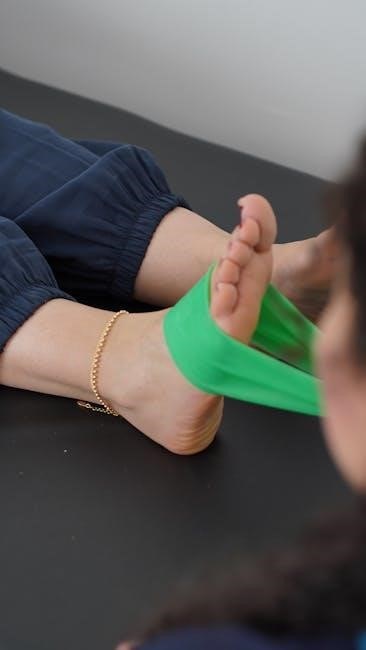LCL injuries require structured rehabilitation to restore knee stability and function. This process involves phased exercises, modalities, and clinical evaluations to ensure proper healing and prevent further damage.
1.1 Understanding the Lateral Collateral Ligament (LCL)
The lateral collateral ligament (LCL) is a critical stabilizer located on the outer aspect of the knee, connecting the femur (thigh bone) to the fibula. It plays a vital role in maintaining knee stability, particularly during rotational and varus (inward) stress. The LCL works in conjunction with the medial collateral ligament (MCL) to provide lateral and medial stability, ensuring proper knee alignment and movement. Injuries to the LCL can occur due to direct blows to the inner knee or excessive twisting, often leading to pain, swelling, and instability. Understanding the LCL’s anatomy and function is essential for developing effective rehabilitation strategies, as improper healing can result in chronic instability and impaired functional outcomes. This knowledge forms the foundation for designing targeted exercises and therapies to restore strength and stability post-injury.
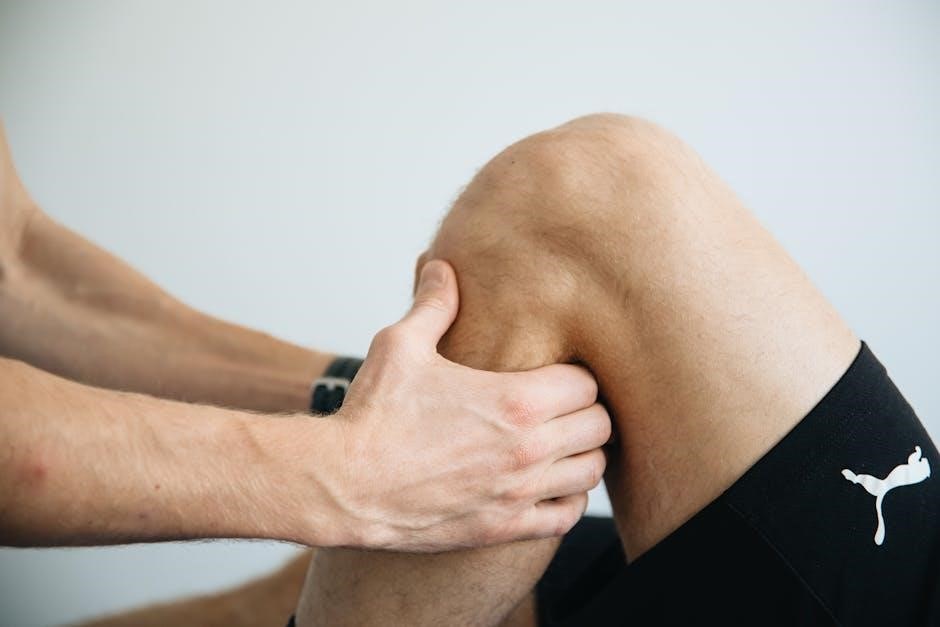
1.2 Importance of Rehabilitation for LCL Injuries
Rehabilitation is crucial for LCL injuries to restore knee function, strength, and stability. Without proper rehab, patients may face chronic instability, limited mobility, and increased risk of further injury. A structured program addresses pain, inflammation, and muscle atrophy, promoting optimal healing. Early-stage exercises focus on range of motion and gentle strengthening, while intermediate and advanced phases incorporate functional activities and sports-specific drills. Rehabilitation also emphasizes proprioception and balance training to enhance joint stability. Adhering to a well-designed rehab protocol ensures a safer return to daily activities or sports, reducing long-term complications. Progression is tailored to individual recovery, with clinical evaluations guiding each phase. Proper rehabilitation not only accelerates recovery but also prevents future injuries, making it essential for achieving full functional restoration and improving quality of life.
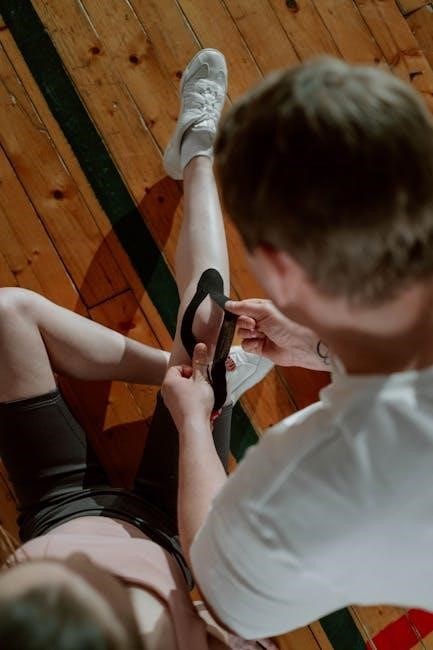
Phases of LCL Rehabilitation
LCL rehabilitation is divided into three phases: acute (0-6 weeks), intermediate (6-12 weeks), and advanced (12-36 weeks). Each phase focuses on specific goals, from pain management to functional recovery.
2.1 Phase 1: Acute Phase (0-6 weeks)
The acute phase focuses on reducing pain and inflammation while protecting the injured LCL. Initial management includes rest, ice, compression, and elevation (RICE). Pain-free exercises like straight leg raises and gentle range-of-motion activities are introduced to maintain knee mobility without stressing the ligament. Modalities such as ice therapy and electrical stimulation may be used to promote healing. Weight-bearing is typically limited, and bracing or immobilization may be recommended to prevent further injury. The goal is to create an environment conducive to ligament healing while minimizing atrophy and stiffness. Progression to the next phase is based on clinical evaluation, including improved range of motion and reduced pain.
2.2 Phase 2: Intermediate Phase (6-12 weeks)
During the intermediate phase, the focus shifts to strengthening the surrounding muscles and improving functional mobility. Exercises such as cone walking, lateral walks, and single-leg balance exercises are introduced to enhance stability and proprioception. Strengthening exercises for the hamstrings, quadriceps, and calf muscles are progressed, with a focus on controlled movements. Pain-free activities like cycling and swimming are encouraged to promote cardiovascular fitness without overloading the LCL. Bracing or taping may still be used for support, but weight-bearing and dynamic movements are gradually increased. The goal is to restore functional strength and prepare the knee for more advanced activities. Progression is based on pain levels, functional improvements, and clinical assessment of ligament stability.
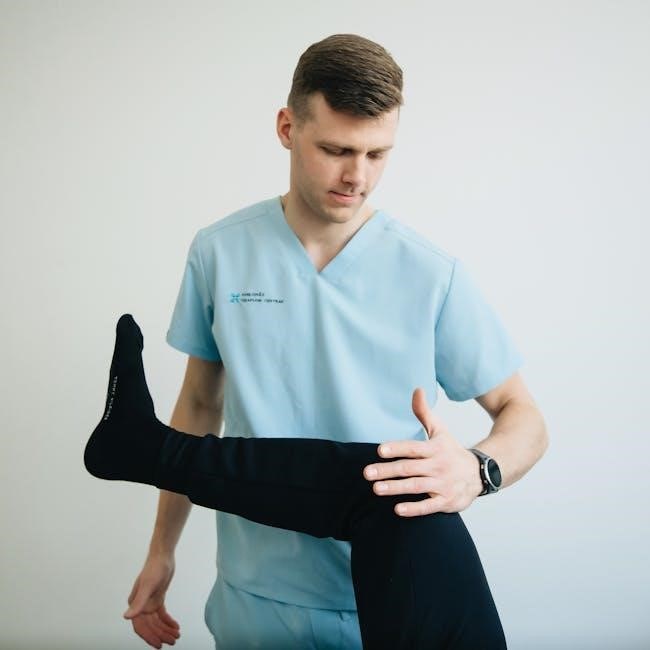
2.3 Phase 3: Advanced Phase (12-36 weeks)
The advanced phase focuses on restoring full functional ability and preparing for return to sport or high-level activities. Exercises progress to include plyometric drills, agility training, and dynamic balance exercises. Sport-specific movements are reintroduced, with an emphasis on proper technique and loading. Strengthening exercises are maximized, targeting the hamstrings, quadriceps, and core muscles. Functional drills like figure-eight running and shuttle runs are incorporated to mimic real-life movements; Bracing may still be used during high-impact activities for additional support. The goal is to achieve pre-injury strength, stability, and confidence in the knee. Progression to this phase is based on achieving full range of motion, strength symmetry, and absence of pain or instability during challenging tasks. Monitoring for any signs of overloading or instability is crucial to prevent setbacks.
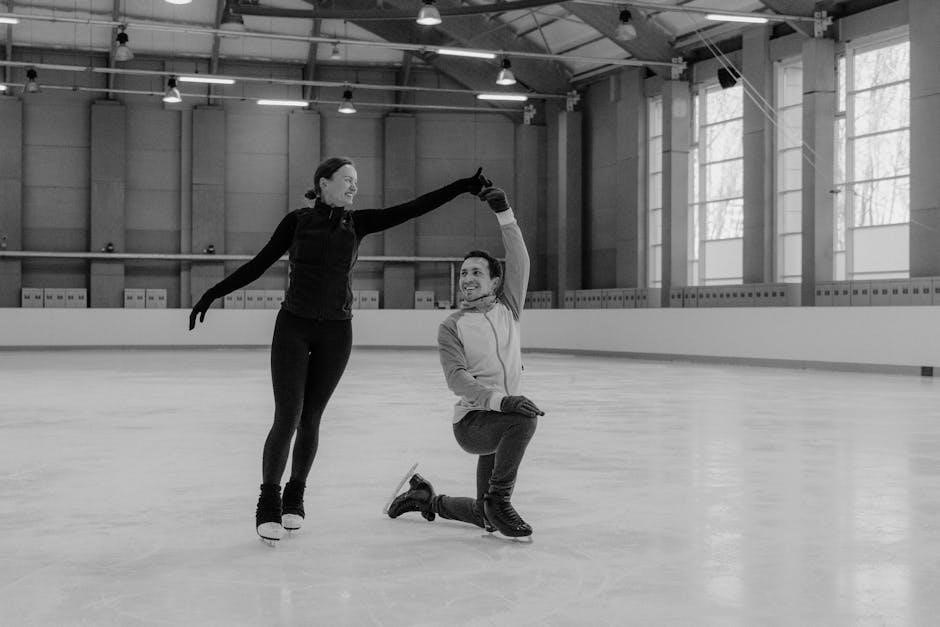
Exercises for LCL Rehabilitation
LCL rehabilitation involves tailored exercises to restore strength, stability, and function. Early-stage exercises focus on range of motion and gentle strengthening, progressing to advanced drills like cone walking and agility training.
3.1 Early-Stage Exercises
Early-stage exercises for LCL rehabilitation focus on restoring range of motion, reducing pain, and improving basic strength. Gentle exercises like straight leg raises, heel slides, and wall-assisted knee bends are commonly recommended. These activities help maintain joint mobility without overloading the injured ligament. Patients are advised to perform exercises slowly and stop if pain occurs. Ice is often used after sessions to minimize inflammation. Progression is gradual, ensuring the LCL heals properly before introducing more strenuous movements. These initial exercises lay the foundation for more advanced rehabilitation phases, emphasizing stability and controlled movements to prevent further injury.
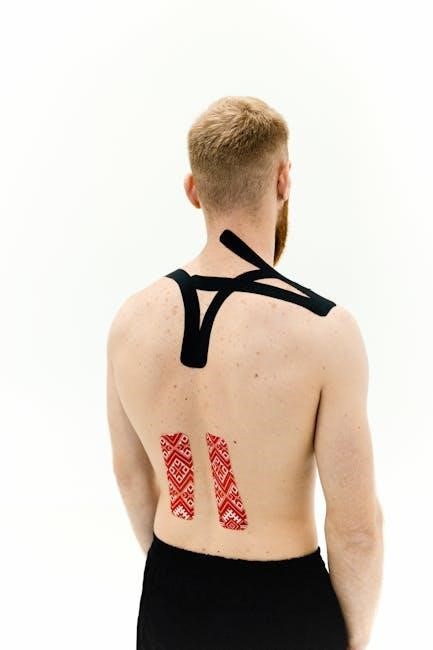
3.2 Intermediate-Stage Exercises
Intermediate-stage exercises for LCL rehabilitation aim to enhance strength, balance, and functional movements. Activities such as cone walking, lateral walks, and step-ups are introduced to improve agility and knee stability. Resistance bands are often used to strengthen the surrounding muscles, including the hamstrings and quadriceps. Balance exercises, like single-leg stands or wobble board training, are incorporated to restore proprioception. Patients may also perform controlled pivoting drills to simulate real-life movements. These exercises are done under supervision to ensure proper form and progression. Modalities like ice and braces may still be used to support recovery. The focus is on gradually increasing load and complexity to prepare the knee for more dynamic activities while avoiding overloading the LCL. Clinical evaluation ensures the knee is ready for advanced exercises, emphasizing pain-free and stable movement patterns.
3.3 Advanced-Stage Exercises
Advanced-stage exercises focus on restoring full knee function and preparing for return to activity. These include high-level strength training, agility drills, and sport-specific movements. Plyometric exercises, such as box jumps and lateral bounds, are introduced to enhance power and explosiveness. Resistance bands are used for dynamic strengthening of the knee and surrounding muscles. Functional exercises like shuttle runs and figure-eight drills improve agility and coordination. Balance training progresses to single-leg hops and dynamic stability exercises on unstable surfaces. Sport-specific drills, such as cutting and pivoting, are tailored to the patient’s activities. The goal is to restore proprioception, strength, and confidence in the knee. Clinical evaluation ensures the knee is stable and pain-free before advancing to these exercises. Proper progression is critical to avoid setbacks and ensure a successful return to full activity.
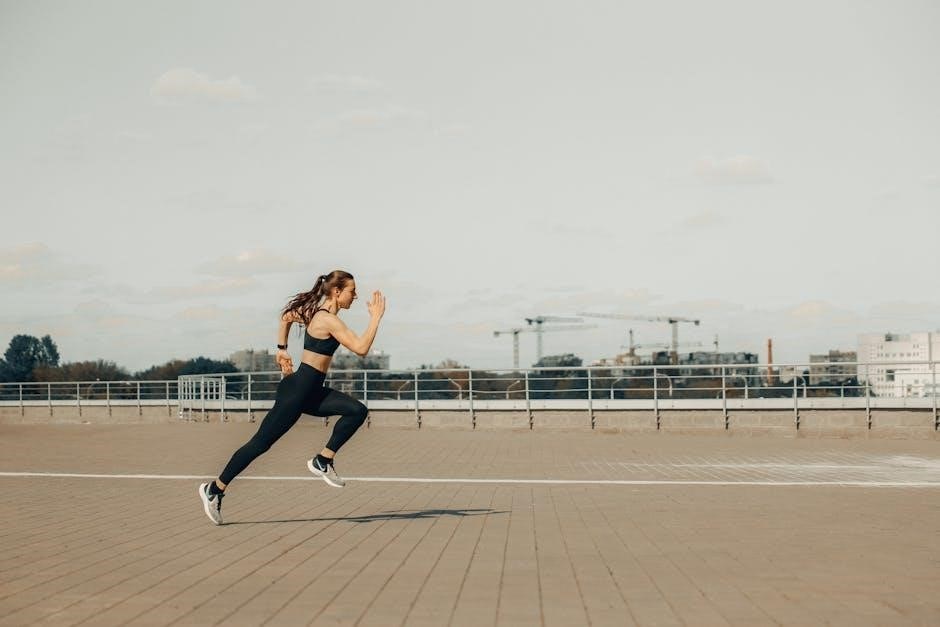
Clinical Evaluation and Progression
Clinical evaluation and progression involve periodic assessments by orthopedic physicians and physical therapists. Progression is based on rehabilitation milestones, activity restrictions, and clinical evaluation to ensure safe return to activity.
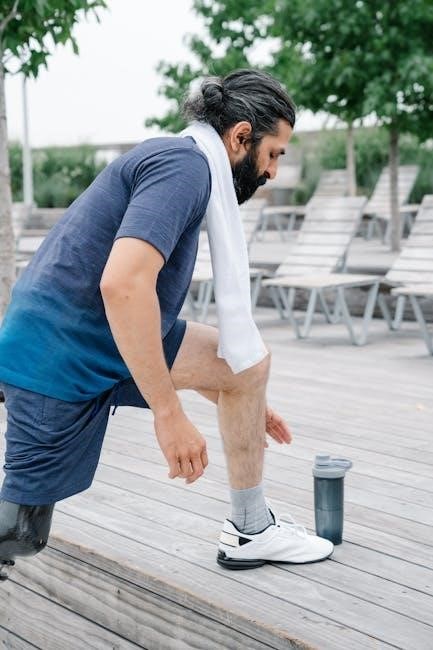
4.1 Rehabilitation Milestones
Rehabilitation milestones for LCL injuries are critical markers of progress. These include pain reduction, improved range of motion, and strength restoration. Early milestones focus on achieving full knee extension and flexion without discomfort. Progression to weight-bearing activities and functional movements, such as single-leg stance and balance exercises, signifies advancing recovery. Strengthening the surrounding muscles, like the quadriceps and hamstrings, is another key milestone. Patients must demonstrate stability during controlled exercises before progressing to dynamic activities. Clinical evaluations, including ligament stress tests, assess readiness for advanced phases. Achieving these milestones ensures a structured and safe transition through rehabilitation phases, minimizing the risk of re-injury and promoting a successful return to pre-injury activities.
4.2 Activity and Participation Restrictions
Activity and participation restrictions are essential during LCL rehabilitation to protect the ligament and promote healing. Initially, weight-bearing activities are limited, and patients may use crutches to avoid stress on the knee. Bracing or taping is often recommended to provide stability. High-impact exercises, pivoting, and cutting movements are strictly avoided in the early stages. As progress is made, controlled weight-bearing and low-impact activities are gradually introduced. Participation in sports or strenuous activities is restricted until strength, stability, and range of motion are restored. These restrictions are tailored to the severity of the injury and the phase of rehabilitation. Adhering to these guidelines helps prevent re-injury and ensures a safe return to normal activities. Regular clinical assessments guide the lifting of restrictions, ensuring the knee is ready for increased demands.
Role of Physical Therapy in LCL Rehab
Physical therapy plays a crucial role in LCL rehabilitation by utilizing targeted exercises, modalities, and gait training to restore strength, stability, and function to the knee.
5.1 Modalities Used in LCL Rehabilitation
Various modalities are employed to support LCL rehabilitation, including ice therapy to reduce inflammation, electrical stimulation to enhance muscle activation, and ultrasound to promote tissue repair. A medial unloader brace may also be used to protect against varus stress and hyperextension, aiding in stability during the healing process. These modalities are often combined with structured exercises to optimize recovery outcomes and restore knee function.
5.2 Gait Training and Balance Exercises
Gait training and balance exercises are essential for restoring normal movement patterns and knee stability during LCL rehabilitation. Cone walking, both forward and lateral, is commonly used to improve gait mechanics and agility. Balance exercises, such as single-leg stands or wobble board activities, help enhance proprioception and reduce the risk of further injury. These exercises are typically introduced in the intermediate to advanced phases of rehabilitation, ensuring the knee can handle increased demands. Proper progression of gait and balance training is critical to avoid overloading the LCL and to ensure a safe return to functional activities. Regular clinical evaluation by a physical therapist helps tailor these exercises to the patient’s progress and needs.
Importance of Proper Progression
Proper progression in LCL rehabilitation ensures gradual loading, preventing overloading and re-injury. Monitoring pain and instability guides safe advancement through phases, optimizing recovery and functional return.
6.1 Avoiding Overloading the LCL
Avoiding overloading the LCL is critical to prevent re-injury and ensure proper healing. Gradual progression through rehabilitation phases is essential, as excessive stress can lead to further damage. Monitoring for pain or instability during exercises helps identify potential overloading. Activities should be modified to stay within pain-free ranges, and high-impact movements should be introduced cautiously. Using modalities like ice can help manage inflammation and reduce stress on the ligament. Clinicians often recommend activity restrictions, such as avoiding varus stress or hyperextension, to protect the LCL during early recovery. Proper progression ensures the ligament strengthens without being overstressed, promoting long-term stability and function.
6.2 Monitoring for Pain and Instability
Monitoring for pain and instability is crucial during LCL rehabilitation to ensure safe progression. Clinicians use periodic evaluations, including patient-reported pain levels and functional assessments, to guide treatment. Activities that provoke pain or instability should be modified or avoided. Ice and other modalities can help manage inflammation and discomfort. Orthopedic physicians and physical therapists conduct regular check-ups to assess ligament integrity and joint stability. Patient feedback is vital, as pain is a key indicator of potential overloading. Exercises and activities are adjusted based on these assessments to avoid re-injury. Consistent monitoring ensures the rehabilitation program is tailored to the individual’s healing progress, promoting optimal recovery and minimizing the risk of complications. This approach helps maintain a balance between progression and protection of the LCL during the healing process.
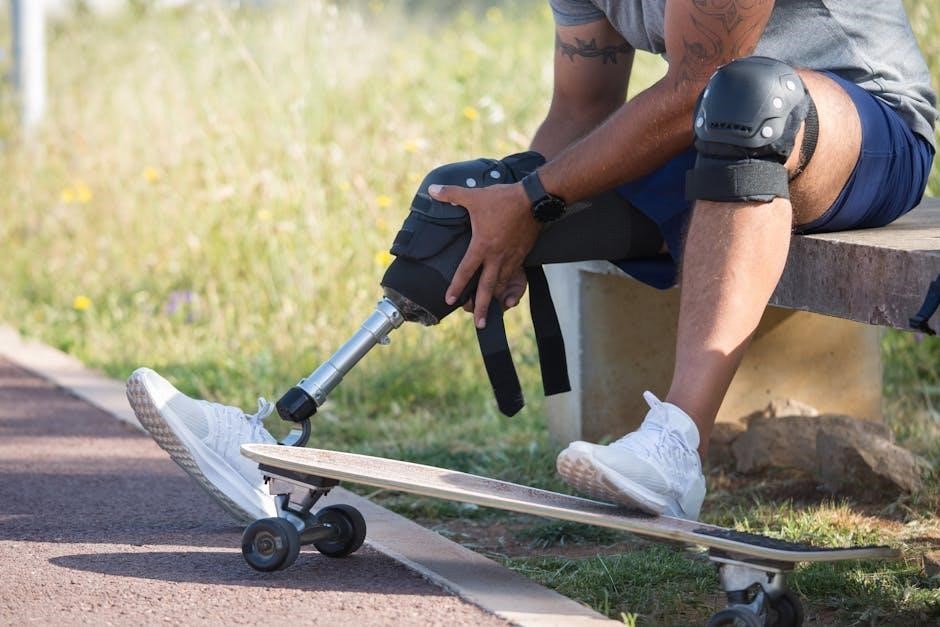
Successful LCL rehabilitation requires a structured approach, emphasizing clinical evaluations and proper progression. Adherence to protocols ensures optimal outcomes, prevents complications, and promotes long-term knee stability.
7.1 Summary of Key Rehabilitation Principles
Effective LCL rehabilitation involves a structured, phased approach to restore knee function and stability. The process begins with the acute phase, focusing on pain management and basic mobility, followed by intermediate and advanced stages that emphasize strength, flexibility, and functional activities. Clinical evaluations, including periodic assessments by orthopedic physicians and physical therapists, guide progression through each phase. Activity and participation restrictions are crucial to avoid overloading the ligament during healing. Modalities such as ice therapy and bracing support the recovery process. Proper progression ensures gradual loading of the LCL, minimizing the risk of re-injury. Monitoring for pain and instability is essential to adjust rehabilitation protocols. Adherence to these principles promotes optimal outcomes, enabling patients to return to pre-injury activities safely and effectively.
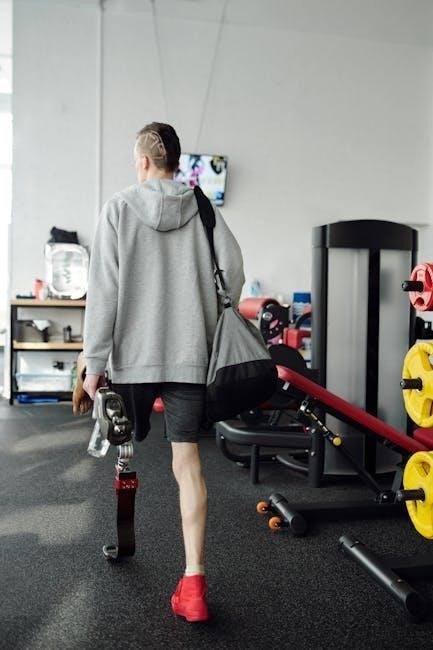
7.2 Long-Term Outcomes and Prevention Strategies
Successful LCL rehabilitation often leads to full recovery, with most patients regaining knee stability and returning to pre-injury activities. Long-term outcomes depend on adherence to rehabilitation protocols and proper progression. Prevention strategies include strengthening the surrounding muscles, improving flexibility, and using proper techniques during sports or physical activities. Incorporating neuromuscular training and balance exercises can reduce the risk of future injuries. Patients should avoid activities that cause excessive stress on the knee, such as sudden pivots or twists, until fully rehabilitated. Regular use of braces or supportive gear during high-risk activities may also prevent re-injury. Completing the full rehabilitation program and maintaining a strong, stable knee are key to achieving optimal long-term results and minimizing the likelihood of recurrent LCL damage.
